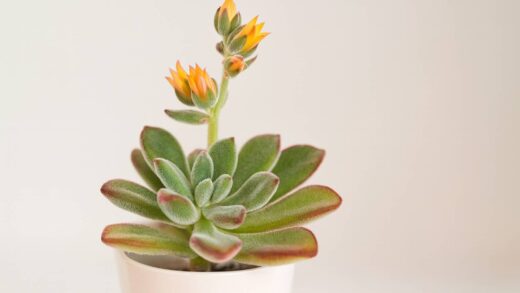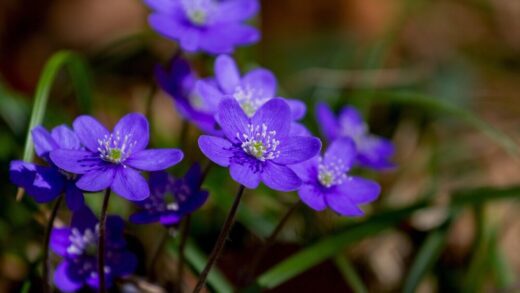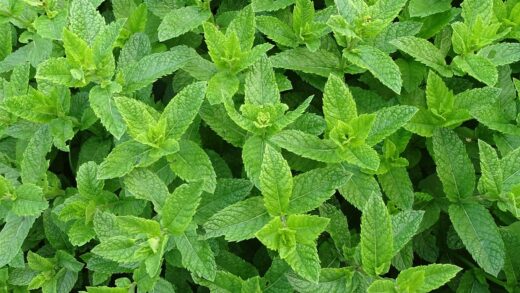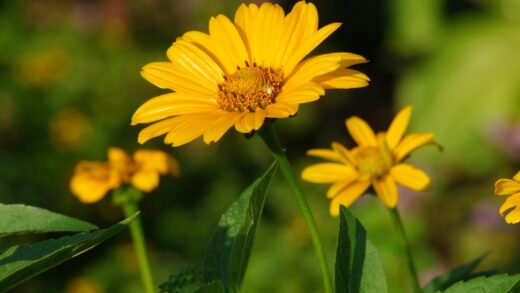The successful establishment of blue oat grass begins long before the plant is even placed in the ground; it starts with careful planning and preparation. Planting this ornamental grass is a straightforward process, but attention to a few key details will ensure it develops into a robust and beautiful specimen. The ideal time for planting is during the cooler, milder seasons of spring or autumn. These periods provide the optimal balance of moderate temperatures and sufficient moisture, allowing the plant to establish a strong root system without the stress of extreme summer heat or winter cold. Proper site selection and soil amendment are foundational steps that will directly influence the plant’s long-term health and visual appeal.
The first step in the planting process is choosing the perfect location. Blue oat grass is a sun-loving plant that requires a minimum of six hours of direct sunlight per day. This exposure to full sun is essential for developing the intense, silvery-blue foliage color that makes the plant so desirable. In shadier conditions, the grass will not only lose its vibrant color, appearing more green, but it will also tend to grow weaker and more open, losing its classic dense, mounded form. Therefore, select an open area of the garden that receives ample sunlight throughout the day.
Once you have identified a sunny spot, the next critical task is to assess and prepare the soil. This grass is native to rocky, well-drained slopes and is extremely intolerant of heavy, waterlogged soils. Before planting, dig a hole and test the drainage; if water stands for an extended period, the site is unsuitable without significant modification. To improve heavy clay soil, you must incorporate generous amounts of grit, coarse sand, or fine gravel to enhance its porosity. This ensures that excess water can drain away freely, protecting the plant’s crown and roots from rot.
The depth and width of the planting hole are also important considerations. The hole should be dug approximately twice as wide as the plant’s root ball but no deeper than the root ball itself. Planting too deeply can lead to the crown of the plant being buried, which can trap moisture and promote rot. When you place the plant in the hole, the top of the root ball should be level with or slightly above the surrounding soil surface. This positioning helps to ensure that water does not pool around the base of the plant.
After positioning the plant in the hole, backfill with the amended native soil, gently firming it around the root ball to eliminate any large air pockets. Once the hole is filled, water the newly planted grass thoroughly to help settle the soil and provide essential moisture to the roots. Applying a thin layer of organic mulch, such as pine bark or gravel, around the base of the plant can help conserve soil moisture and suppress weeds, but be careful to keep the mulch away from the immediate crown of the plant to maintain good air circulation.
More articles on this topic
Selecting the optimal planting time
The timing of when you plant your blue oat grass can have a significant impact on its successful establishment and subsequent growth. The two most favorable windows for planting are in the spring and autumn. Both seasons offer moderate temperatures and generally more reliable rainfall, which combine to create a less stressful environment for a new plant to develop its root system. Choosing one of these periods over the heat of summer or the deep cold of winter gives the grass the best possible start in its new home.
Planting in the spring is a very popular and effective option. By getting the grass in the ground after the last frost has passed, you allow it to take full advantage of the entire growing season to establish itself. The warming soil and increasing daylight hours encourage rapid root and foliage development. A spring-planted blue oat grass will have several months to build up its strength and resilience before it has to face the challenges of either summer heat or the following winter’s cold, making it a very reliable strategy for gardeners in most climates.
Alternatively, planting in the early autumn is another excellent choice, particularly in regions with very hot summers. Planting in late summer or early autumn allows the grass to establish its roots in warm soil while the air temperatures are beginning to cool down. This reduces the risk of heat and drought stress on the young plant. The plant can focus its energy on root growth rather than foliage production, leading to a robustly rooted specimen that is well-prepared to endure the winter and burst forth with vigorous growth the following spring.
The one season to avoid for planting blue oat grass is the middle of summer. The combination of intense sun and high temperatures places a great deal of stress on a new transplant, making it much more difficult for the plant to establish. It will require significantly more water to keep it from wilting, and the risk of failure is much higher. Similarly, planting too late in the autumn is risky, as the plant may not have enough time to develop a sufficient root system before the ground freezes, leaving it vulnerable to winter damage.
More articles on this topic
A step-by-step guide to planting
The physical act of planting blue oat grass is simple, but following a methodical process ensures the plant is positioned for optimal growth. Begin by preparing the selected site. Once you have confirmed the location offers full sun and have amended the soil for excellent drainage, you are ready to dig the planting hole. The hole should be dug to be at least twice the diameter of the container the plant came in. This loosened soil around the root ball provides an easy path for new roots to penetrate as they expand outwards from the plant.
Before removing the plant from its nursery pot, it is a good practice to water it well. This helps to hydrate the root ball and makes it easier to slide the plant out of the container without causing damage to the roots. Carefully remove the plant and inspect the root system. If the roots are tightly coiled or circling the bottom of the pot (a condition known as being root-bound), gently tease them apart with your fingers or make a few shallow vertical cuts with a sharp knife. This encourages the roots to grow out into the surrounding soil rather than continuing to circle in on themselves.
Next, place the plant in the center of the prepared hole. The critical factor at this stage is to ensure the correct planting depth. The top of the root ball should sit perfectly level with, or even a centimeter or two above, the level of the surrounding garden soil. Planting too deep is a common mistake that can suffocate the crown of the plant, leading to rot and eventual death. Backfill the hole with the amended soil, working it in and around the root ball and gently tamping it down to remove any large air pockets.
After the hole has been completely backfilled, the final step is to water the plant thoroughly. Provide a deep, slow soaking that allows the water to penetrate the entire root zone and settle the soil firmly around the roots. This initial watering is crucial for eliminating any remaining air pockets and providing the immediate moisture the plant needs to begin its establishment phase. For the first few weeks, monitor the soil moisture regularly and water as needed to keep the soil consistently moist but not waterlogged.
Propagation by division
Division is the most common and reliable method for propagating blue oat grass, and it also serves as a way to rejuvenate older, established clumps. Over time, typically after several years, the center of a mature clump may start to die out, resulting in a less vigorous and attractive plant. Dividing the clump allows you to remove this dead central portion and create multiple new, healthy plants from the vigorous outer sections. This process is best performed in the early spring, just as new growth is beginning to emerge.
To begin the process of division, you will first need to carefully dig up the entire plant clump. Use a sharp spade or garden fork to dig around the perimeter of the clump, going deep enough to get under the entire root ball. Once you have loosened the soil all the way around, gently lever the clump out of the ground. Be prepared for this to require some effort, as established ornamental grasses can have very dense and fibrous root systems. Lift the entire clump and move it to a tarp or other clean surface to make the next step easier.
With the clump out of the ground, you can now proceed with the actual division. Using a sharp spade, an old serrated knife, or even a garden axe for very large, tough clumps, slice the root ball into several smaller sections. Each new division should have a healthy portion of both roots and top growth (crowns). Discard the old, woody, and often dead central part of the original clump, as this part will not regrow well. Aim to create divisions that are a reasonable size, perhaps 10 to 15 centimeters in diameter, to ensure they have enough energy to establish quickly.
Once you have your new divisions, they should be replanted as soon as possible to prevent the roots from drying out. Plant each division at the same depth it was previously growing, following the same planting guidelines as you would for a new nursery plant. Prepare the new planting holes with well-draining soil, place the divisions in the holes, backfill with soil, and water them in thoroughly. These new divisions will establish themselves relatively quickly and grow into full-sized clumps over the next couple of growing seasons.
Starting from seed
Growing blue oat grass from seed is a viable but less common method of propagation, primarily because it requires more time and patience than division. It can be a rewarding and economical way to produce a large number of plants for a mass planting or a meadow-style garden. The seeds can be started indoors in late winter or sown directly into the garden in the spring after the danger of frost has passed. Starting seeds indoors gives you greater control over the growing conditions and can result in stronger seedlings.
To start seeds indoors, fill seed trays or small pots with a well-draining, sterile seed-starting mix. Lightly press the blue oat grass seeds onto the surface of the soil; they require light to germinate, so do not cover them with soil. Gently mist the surface to moisten the mix without dislodging the seeds. Cover the tray with a clear plastic dome or plastic wrap to maintain high humidity, and place it in a warm location with plenty of bright, indirect light. Germination can be slow and somewhat erratic, typically taking anywhere from two weeks to a month.
Once the seeds have germinated and the seedlings have developed a few sets of true leaves, you can remove the plastic cover to increase air circulation. Continue to keep the soil consistently moist but not waterlogged. When the seedlings are large enough to handle, they can be carefully transplanted into individual pots to give them more room to grow. It is important to continue growing them in a bright location until they are ready to be moved outdoors.
Before planting the seedlings out into the garden, they must be “hardened off.” This is the gradual process of acclimating the young plants to outdoor conditions. Over the course of a week to ten days, place the seedlings outdoors in a sheltered spot for a few hours each day, gradually increasing their exposure to direct sunlight and wind. Once they are fully hardened off and all risk of frost has passed, they can be planted into their permanent positions in the garden, following the standard planting procedures.
📷: Drew Avery, CC BY 2.0, via Wikimedia Commons




















